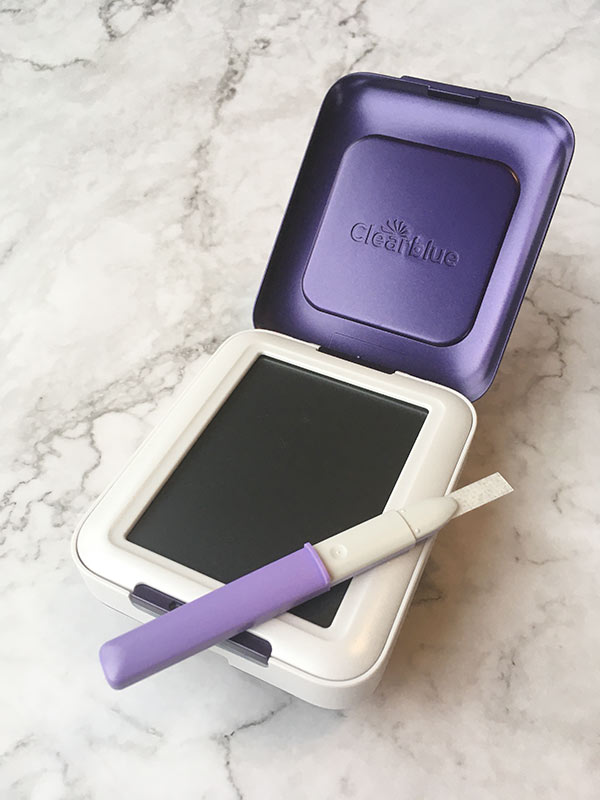NFP Methods Comparison Chart
Natural family planning is not “one thing.”
Natural family planning methods (also known as fertility awareness or fertility awareness based methods of family planning) differ in a couple important ways:
- which fertile signs are tracked,
- how they are tracked, and
- how fertile and infertile observations are used to identify the fertile phase or fertile period (the “rules” the method uses to determine whether any given day in the women’s cycle is a “fertile day” or an “infertile day,” and thus predict whether or not sexual intercourse on that day could result in a pregnancy.)
There are perhaps a surprising number of ways a woman can track their fertility, and there is no one “best” method for all women, all the time.
Many women, in fact, use different methods at different times in their life, as their circumstances change. Choosing which method of natural family planning will be the best fit for you is a personal and practical choice.
I’m a Marquette Method instructor, which is an NFP method which is based in measuring hormone levels (estrogen and LH, specifically) via urine tests.
Women using the Marquette Method also have the option to include other fertile signs into the observation routine, such as basal body temperature (BBT) readings, cervical mucus observations, and urinary progesterone tests. (For a full explanation of the Marquette Method protocol options, consult my Marquette Method Guide.)

NFP Methods Comparison Chart
The NFP methods comparison table below outlines some of the major similarities and differences between different modern NFP methods, according to the fertile signs that each NFP method tracks.
Single-Check vs. Double-Check or Cross-Check Methods of NFP
Some fertility awareness methods, such as the Creighton Model and the Billings Ovulation Method, track only one fertile sign (cervical secretions.)
Other methods, sometimes called double-check or cross-check methods of NFP, track multiple signs concurrently. Symptothermal methods include the Couple to Couple League, Serena, Sensiplan, and SymptoPro.
The Marquette Method is somewhat unique in that it relies on testing and tracking hormone levels directly, through at-home urine tests which measure estrogen and LH levels, but Marquette Method users can also opt to include a variety of optional signs into their testing routine, including urinary progesterone tests, basal body temperatures, and cervical mucus observations.
Categorizing NFP Methods by Type
This page focuses on some of the most popular methods of natural family planning (NFP) but you should also know that it’s possible to categorize natural family methods into 4 broad categories:
- calendar-based methods
- mucus-only methods
- symptothermal methods
- symptohormonal methods
If you’re new to natural family planning we encourage you to read our Beginner’s Guide to Natural Family Planning (NFP) which is written for couples who aren’t already familar with the landscape of NFP.
In that guide, you’ll find three parts:
Part 1: What is NFP and How it Works
Part 2: Different Types of NFP
Part 3: The Spiritual Side of NFP (A.k.a. Why Catholics Use NFP)
Which Methods of NFP Track Which Fertile Signs?
Estrogen Levels (Urinary Hormones) | Marquette Method Only
The Marquette Method of Natural Family Planning (NFP) is the only method that uses urinary estrogen levels as a primary indicator of fertility. Clearblue Fertility Monitor Test Sticks measure estrogen and LH levels concurrently, and these results are interpreted by the Clearblue Fertility monitor.
Currently, Clearblue monitors are the only fertility monitors on the market which test urinary estrogen levels. The Mira Fertility Plus system also tracks estrogen levels, and a preliminary nfp study has been published on the ease of use, user satisfaction, and accuracy of the Mira system vs. the Clearblue system (Bouchard, Fehring & Mu, 2021).
Luteinizing Hormone (LH) Levels (Urinary Hormones) | Marquette Method, FEMM (Optional)
At the end of the pre-ovulatory phase of the menstrual cycle, woman experience a surge in luteinizing hormone (LH) levels. This “LH surge” precedes ovulation by 24-36 hours. The LH surge causes the follicle to break open and release a mature egg.
Unlike changes in estrogen levels, which change a woman’s cervical mucus secretions, LH is asymptomatic, but it can be measured in urine. Clearblue Fertility Monitor Test sticks, used by the Marquette Method, test both estrogen and LH levels.
LH levels can also be measured by single-use LH test sticks, such as the Wondfo brand of LH test sticks . The FEMM method of natural family planning uses LH test sticks, rather than Clearblue monitors, to track LH levels.
Recommended reading: Here is a detailed comparison between the Marquette Method and FEMM approaches to NFP, written by a nurse on our team trained in both methods.
Progesterone Levels (Urinary Hormones) | Marquette Method (Optional), FEMM (Optional)
In the post-ovulatory phase of the menstrual cycle, the empty follicle breaks down and secretes progesterone.
Progesterone levels can be measured directly via Proov urinary test sticks , or symptomatically via a basal body temperature shift .
Cervical Mucus | Creighton Model, Billings Method, Symptothermal Methods, FEMM, Marquette Method (Optional)
Tracking cervical mucus secretions has long been a primary means of identifying the fertile period. The consistency of a woman’s cervical mucus changes as her menstrual cycle progresses.
As estrogen levels rise in the pre-ovulatory phase of the menstrual cycle, cervical mucus becomes more abundant, stretchy, and slippery. This peak-type mucus is sometimes called EWCM mucus (egg white cervical mucus) because it’s consistency resembles egg whites. In the post-ovulatory phase, mucus “dries up” or becomes less abundant, stretchy or slippery.
A cervical mucus method teaches women how to observe and classify their cervical mucus daily and record these observations on their NFP chart. The Creighton Model FertilityCare System (CrMS) and the Billings Ovulation Method are the main mucus-only methods taught and used in the United States. The main difference between Billings and Creighton is that Billings users are taught to focus on the sensations cervical mucus produces (how it feels at the vulva) and Creighton users are taught to use a more detailed, standardized system to classify cervical mucus using external observations (e.g. tacky, cloudy, clear, stretchy, lubricative). In effect, Creighton is a standardization of Billings—Billings was developed in the 1950s, and Creighton was developed in the 1980s.
One thing that makes the Marquette method different from Creighton and Billings is that with Marquette, tracking cervical mucus is optional, not mandatory. With Marquette, estrogen levels are measured directly (though urinary estrogen metabolites), rather than symptomatically (through cervical mucus sensations/observations).
Basal Body Temperatures (BBT) | Symptothermal Methods, Marquette Method (Optional)
Rising progesterone levels in the post-ovulatory phase of the menstrual cycle cause a woman’s body temperature to increase by 0.4-0.6 degrees Farhenheit.
Symptothermal methods of NFP track this temperature shift by having woman take their basal body temperature (BBT) upon waking each day, and then recording their daily temperature on their fertility chart. Women can take their temperature using a digital oral thermometer or a “smart,” wearable thermometer like the TempDrop .
The Marquette Method has optional protocols for including BBT readings into a woman’s Marquette Method routine.
Cervical Position | Some Symptothermal Methods (Optional)
In the lead up to ovulation, a woman’s cervix rises and becomes softer. At the height of ovulation, the uterine os opens to allow sperm to pass through. In the post-ovulatory period, a woman’s cervix lowers, closes, and becomes more firm.
Some symptothermal methods of NFP/fertility awareness include internal cervical checks as a secondary, optional fertile sign.
References
Free Marquette Method Consultation
Have questions about the Marquette Method?
I’d be glad to answer any questions you have about the method or about Vitae Fertility's training packages.
Click below to start your free, no-obligation consultation with me.
